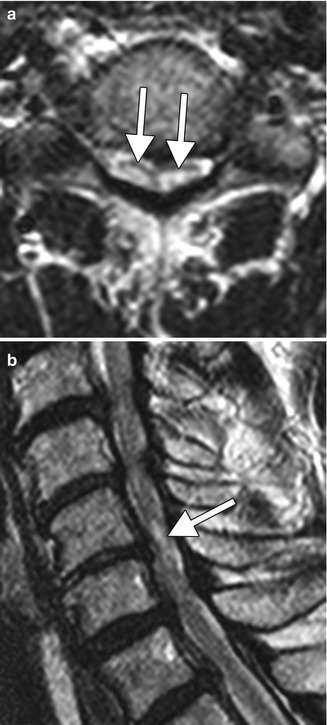Fig. 42.1
Zinc-induced copper deficiency myelopathy. The patient had a history of using large quantities of zinc supplements and subsequently presented with the subacute onset of progressive numbness and paresthesias affecting all four limbs in a non-length-dependent pattern with a prominent Romberg sign and vibratory loss in her legs without weakness or atrophy on exam. The patient’s zinc level at the time of presentation was 152 (reference range 60–120), the vitamin B6 and B12 levels were normal, and serum copper level was at the lower limit of normal at the time of imaging. Axial (a) and sagittal (b) T2-weighted MR images of the cervical spine demonstrate long-segment T2 hyperintensity, predominantly involving the cervical dorsal columns (arrows)
42.4 Differential Diagnosis
The main considerations for the abnormal findings of zinc-induced copper deficiency myelopathy on imaging include other causes of subacute combined degeneration, such as from vitamin B12 deficiency and nitrous oxide toxicity (refer to Chap. 11). Since the imaging findings of these various cases of subacute degeneration are essentially indistinguishable, clinical parameters may point to the precise etiology. Other conditions that may less closely resemble subacute combined degeneration on imaging include spinal cord infarction; Wallerian degeneration; HIV myelopathy; demyelinating conditions, such as multiple sclerosis (refer to Chap. 11); and compressive myelopathy (Fig. 42.2).










